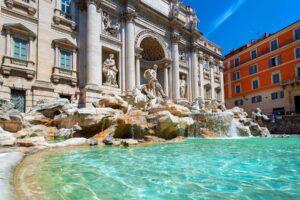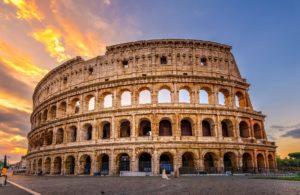Fodor's Expert Review Terme di Caracalla
The Terme di Caracalla are some of Rome's most massive—yet least visited—ruins. Begun in AD 206 by the emperor Septimius Severus and completed by his son, Caracalla, the 28-acre complex could accommodate 1,600 bathers at a time. Along with an Olympic-size swimming pool and baths, the complex also had two gyms, a library, and gardens. The impressive baths depended on slave labor, particularly the unseen stokers who toiled in subterranean rooms to keep the fires roaring in order to heat the water.
Rather than a simple dip in a tub, Romans turned "bathing" into one of the most lavish leisure activities imaginable. A bath began in the sudatoria, a series of small rooms resembling saunas, which then led to the caldarium, a circular room that was humid rather than simply hot. Here a strigil, or scraper, was used to get the dirt off the skin. Next stop: the warm(-ish) tepidarium, which helped start the cool-down process. Finally, it ended with a splash around the frigidarium, a chilly... READ MORE
The Terme di Caracalla are some of Rome's most massive—yet least visited—ruins. Begun in AD 206 by the emperor Septimius Severus and completed by his son, Caracalla, the 28-acre complex could accommodate 1,600 bathers at a time. Along with an Olympic-size swimming pool and baths, the complex also had two gyms, a library, and gardens. The impressive baths depended on slave labor, particularly the unseen stokers who toiled in subterranean rooms to keep the fires roaring in order to heat the water.
Rather than a simple dip in a tub, Romans turned "bathing" into one of the most lavish leisure activities imaginable. A bath began in the sudatoria, a series of small rooms resembling saunas, which then led to the caldarium, a circular room that was humid rather than simply hot. Here a strigil, or scraper, was used to get the dirt off the skin. Next stop: the warm(-ish) tepidarium, which helped start the cool-down process. Finally, it ended with a splash around the frigidarium, a chilly swimming pool.
Although some black-and-white mosaic fragments remain, most of the opulent mosaics, frescoes, and sculptures have found their way into Rome's museums. Nevertheless, the towering walls and sheer size of the ruins give one of the best glimpses into ancient Rome's ambitions. If you're here in summer, don't miss the chance to catch an open-air opera or ballet in the baths, put on by the Teatro dell'Opera di Roma.
READ LESS








